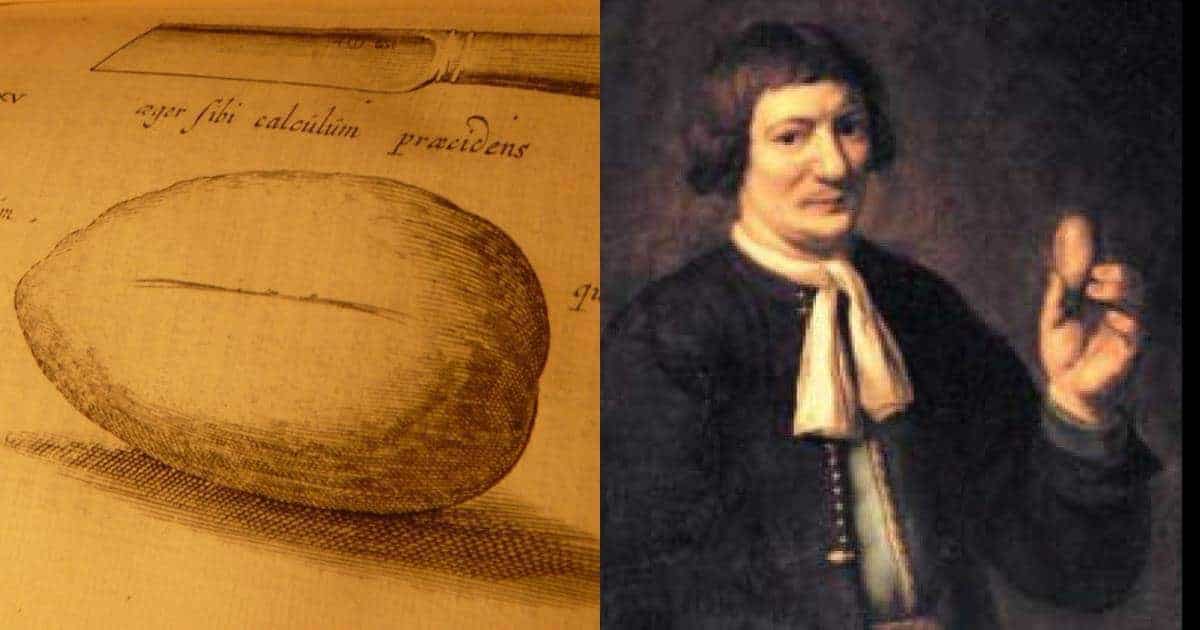In 1651, Jan de Doot was suffering from a bladder stone. He was a Dutch blacksmith who had a history of bladder problems and he had already had two stones cut from his bladder previously by stone cutters. The experience with the stone cutters was bad enough that he decided anything was better than going back to one. It was at that moment the pain was unbearable and he was faced with going to a stone cutter or resorting to more drastic measures. He decided that he would be the only man to cut into his flesh and made arrangements to perform the surgery on his own.
He sent his wife to the fish market and called over his brother to help him. He told his brother to pull his scrotum aside so that he could grab the very large stone in his left hand. With his right hand he cut into the perineum. Then he did squats to get the wound to open up enough for the stone to fit through. Reaching two fingers into the wound he was able to reach around the large bladder stone and popped the stone out, tearing his bladder in the process. The stone fell to the ground and only then was Jan de Doot willing to get help from a healer.
He told his brother to run for the healer who then stitched up the wound and bound it up tightly. The operation proved to be successful and Jan de Doot was believed to have lived at least 5 years after the ordeal. His story is told in a book entitled Observationes medicae written in 1672 which details 230 medical cases. The stone was 4 ounces in weight and was the size of a hen’s egg.
But perhaps the strangest part of the story is what Jan de Doot did with the stone and what historians think really happened. Keep reading to find out!

